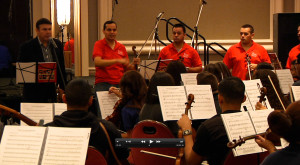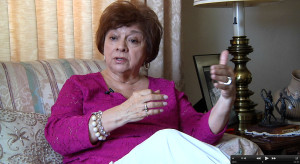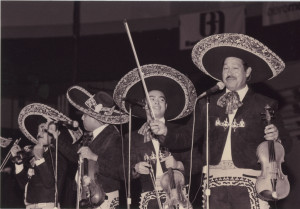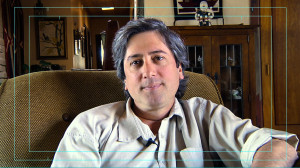So many mariachi miracles
Click photos to enlarge:
When William Ackerley suggested the title The Mariachi Miracle for this latest film project I though, “Great idea.” The name really speaks to the transformational quality Tucson’s mariachi movement has had on our community.
But I didn’t realize how many miracles there were.
Tonight I’ve been pouring through transcripts of the interview I did with Becky Montaño, former Tucson Unified School assistant superintendent of schools, and a 20 year veteran of the Tucson International Mariachi Conference board.
Hearing her tell about that first year of the mariachi conference, i’s a miracle it ever happened. The majority of folks on the board of the La Frontera behavioral health center, which the mariachi conference financially benefits, wanted no part of being in on this. Most had full time jobs in the real world and absolutely no experience hiring talent, staging a show or even putting a workshop together. But La Frontera CEO Nelba Chavez wooed them in with the notion that they might make $1,000 for the center.
Factor in headliners that would only do the show on a handshake, and demanded to be paid in cash the minute they stepped off the stage. Montaño would head to the Tucson Convention Center box office, gather up thousands of dollars in particular bills and carry it around in a paper sack until the set was done and the money delivered.
Evidently Mariachi Vargas, which was supposed to do the workshops the first year, didn’t understand what that meant. The group came in, played a bit in the morning, then left for the day with conference officials scurrying around trying to produce some semblance of an educational event for the workshop participants.

2013 Tucson International Mariachi Conference masters workshop, taught by Jose Hernandez and Mariachi Sol de Mexico.
Life on the cutting edge of the mariachi conference scene was a tightrope walk, and there were falls along the way. But they kept getting back up and fixed the problems as they came along. They found a stable of workshop instructors, developed a curriculum and appropriate levels of study,and eventually were able to include home grown talent that wasps good as the imports. They learned to deal with the egos and the contract requests. they rode the tides of popularity from the salad says of the Ronstadt recordings in the late 1980s and early 1990s through the near flameouts caused by the economic decline of recent times.
And through it all they kept the workshops going. Anywhere from 600-1,000 students attended the workshops over the 32 years of the conference. Students came from near and far, traveling longer distances in the early days when there were fewer conferences.
Finding qualified teachers wasn’t just a problem for the conference. At area schools, as they tried to put mariachi and folklórico studies into the classroom, the lack of degree-bearing teachers got things off to a rough start. But within a few years graduates of mariachi programs and conferences started getting degrees in music education. Former Mariachi Los Changuitos Feos graduate Dr. Jeff Nevin pioneered a college-accredited mariachi degree program, and set about writing method books for school music teachers to help them meet the national demand for mariachi education.
Where a need exists, it doesn’t last long in the mariachi world.
And that’s another mariachi miracle. People somehow come together, often with medium to low initial interest, and are quickly transformed into mariachi evangelists. They take on whatever chores they are given, and innovate solutions to problems along the way. They learn from their mistakes and keep moving forward. The self reliance of the culture, the sense of community purpose and unerring luck have led to bigger and bigger things as time went on since the start of the mariachi movement in Tucson.



